Published on 2021-04-24 21:33
preface
I wish I could be an idle person
Never mind the world
Don't worry
Listen quietly
Wind from a thousand years ago
Whispers through the streets
Take a closer look
Thousands of years of time
Brick by brick, scene by object
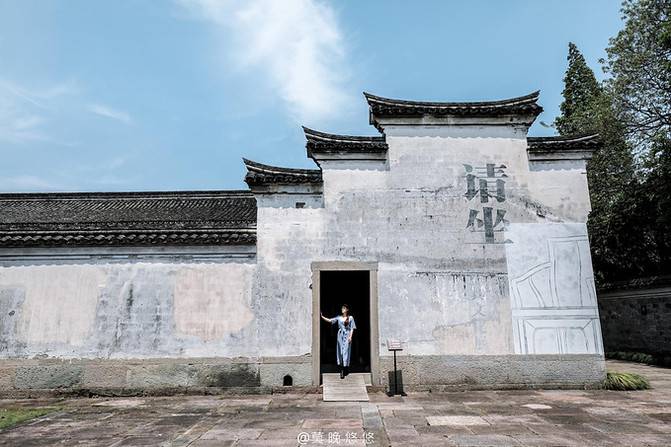
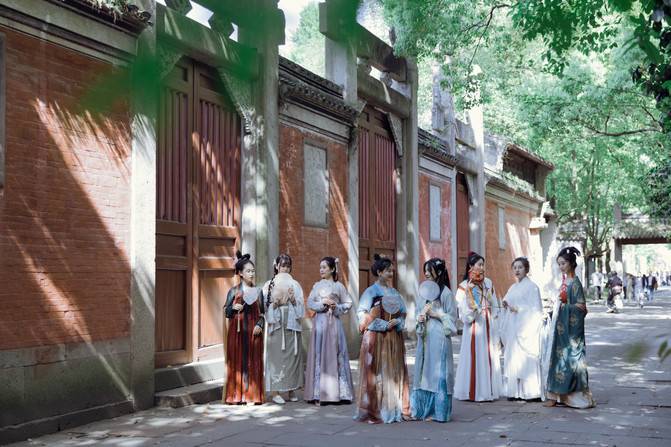
This year's May Day holiday, as the first long holiday after the Spring Festival, lasts for five days. Of course, it's a rare holiday to play recklessly. Usually in the bustling city shuttle, bustling, a holiday, just want to stay away from the hustle and bustle of the city, find a quiet and leisurely place to stop, relax, to leave a little white for life.
Therefore, we came to Cicheng ancient county, which enjoys the reputation of "the first ancient county in the south of the Yangtze River".
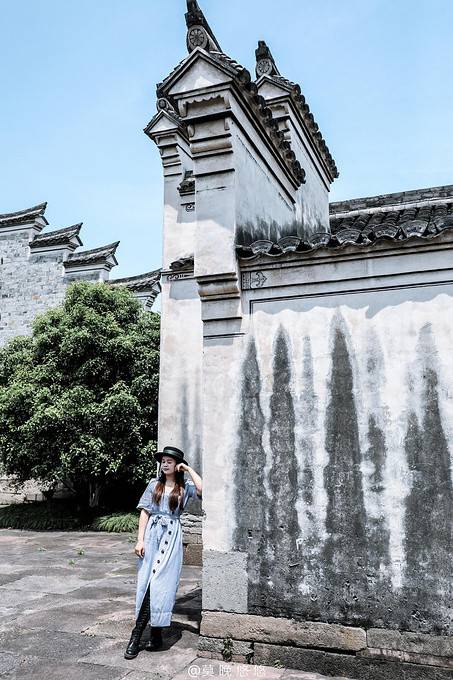
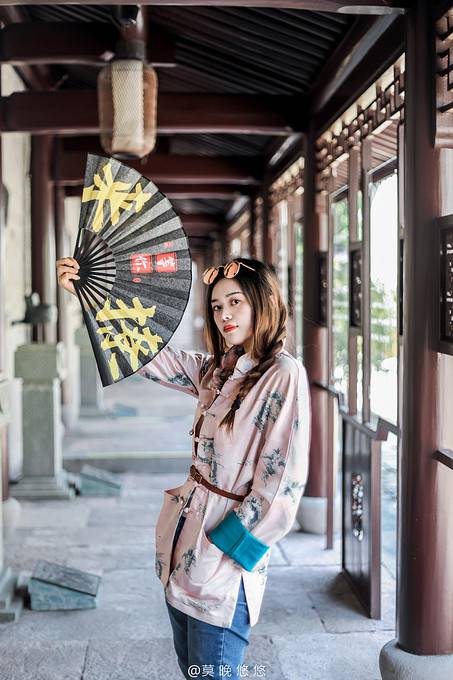
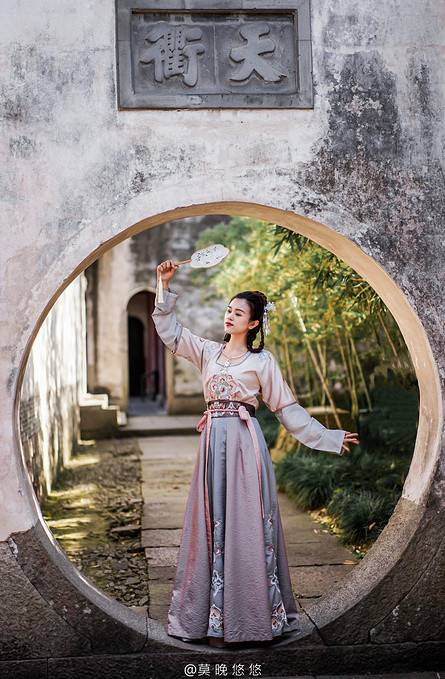
About Cicheng ancient county
Cicheng, located in the northwest of Jiangbei District, Ningbo City, is about 15 kilometers away from the center of Ningbo City. Built in the spring and Autumn Period 2500 years ago, the city was built by King Ju Jian of Yue. It is known as "Ju Yu" and "Ju Zhang" in history.
From the 26th year of Kaiyuan in Tang Dynasty (738 AD) to 1954, Cixi County (the county seat of Cixi County) was ruled for more than 1200 years, so it was named "Cicheng".
Cicheng is one of the few well preserved ancient counties in Jiangnan. Compared with other famous ancient cities, the development of Cicheng is relatively late, and the relevant departments pay attention to the protection of the historical features of the ancient city, so there is no excessive commercial development at present.
Therefore, here we can not only see the preserved traditional life structure, but also the traditional buildings that show the historical heritage everywhere, but also experience the unique comfortable and simple charm of the ancient county.
Cicheng ancient county city completely retains the pattern of streets and alleys in Tang Dynasty, just like the chessboard of Chinese chess, which is horizontal and vertical, symmetrical and crisscross.
Walking around, there are traditional ancient buildings with strong historical flavor on both sides. At night, people have the illusion of crossing thousands of years and dreaming back to the Tang Dynasty.
Feng Yu's house: a model of Jiangnan architecture in the early Qing Dynasty
Feng Yu house is composed of Feng house and Yu house. Fengzhai is a national key cultural relic protection unit, and yuzhai is a municipal cultural protection unit in Ningbo. The feeling of the whole building is that the courtyard is deep, quiet and deep, full of the architectural style of Jiangnan in the early Qing Dynasty.
The five horse head wall in the house is the highest existing horse head wall in the ancient county city, and it is also recognized by many tourists as a must punch in place~
Speaking of the Feng family in Cicheng, it is definitely one of the famous families with a long history, a large number of talents and a great reputation in eastern Zhejiang. It has the reputation of "half city of Feng" in Cicheng.
Feng Shuji, the governor of Huguang in Ming Dynasty, was one of his family. Feng's house was the place where he lived. Later, he sold part of his house to the Yu's family, so it was called "Feng Yu's house".
The whole house covers an area of more than 30000 square meters, which shows how rich the families of Feng and Yu were at that time. There is also a local saying: "Feng's house, Yu's Valley and Qian's family eat."
This house was built in the late Qianlong period, and the main building retains the style of Ming Dynasty, which is still relatively complete. The gate faces east and is a building type platform gate. A large stone window with the word "Lu" is set on the right side of the gate.
The house is full of traces of time everywhere. The rusty door rings are waiting for people to knock~
The ancient county government is solemn and relaxed, heavy and elegant
Founded in the 26th year of Kaiyuan (738 AD), Cicheng county government was built by Fangguan, the first magistrate of the county. It lasted to 1954 and has a history of more than 1200 years.
Cixi County government was first built on the Fubi mountain. Due to the invasion of foreign enemies and natural disasters, it was built and destroyed many times. Now the county government is rebuilt according to the detailed drawing of cixigu county annals in Guangxu period, covering an area of more than 40000 square meters.
"Zhenshiting" is used by the emperor to admonish local officials. It is engraved with the words "public life is bright and honest life is powerful", which is used to warn the county master to be aboveboard in handling cases so as to establish prestige in the eyes of the common people; In the general county government, it is called "Jie Shi Fang".
The Xike room in the county government consists of five rooms, which are workshops, torture rooms, soldier rooms, ceremony rooms and official rooms. Together with the dongke room, the Xike room constitutes the functional office of Cixi County Government.
During the tour, you can feel that the county government has a long history, rigorous layout, clear hierarchy, architectural structure, corridor connected, integrated, reflecting the characteristics and style of traditional Chinese art.
Behind the county government, there is another world. There is also a big back garden. It is surrounded by green branches and leaves, and it is very interesting~
Just that day, he wore a set of Guochao Tang costume, which was very harmonious with the whole environment, so he took his little friends to take beautiful photos together
After shooting, it's really amazing and the effect is great
The era and culture of the Academy
"School" is the meaning of "examination", which is called "examination shed" in the folk. It is the place of children's examination in the feudal imperial examination system. According to Cixi County annals, as early as the 15th year of Daoguang in the Qing Dynasty, that is, in 1835, Zheng tingrong, Zheng Yikui and his son contributed 24000 taels of silver to build it.
The present academy is rebuilt on the basis of the original drawings recorded in Cixi County annals of Guangxu in Qing Dynasty.
The whole building of the academy is in the traditional Chinese axial symmetry layout: from south to north, there are the main gate, the instrument gate, the lobby, the second Hall and the test center; On the left and right axes, there are symmetrical Wenchang and Gongci, which have a very traditional architectural style of Ming and Qing Dynasties“ The layout of the examination room is neat, serious and magnificent.
The quiet and elegant environment in the museum must provide a good environment for examinees.
The imperial examination hall in Cicheng is a place of great historical value, which reflects the panorama of ancient Chinese imperial examination system and provides substantial reference for future generations to understand the ancient imperial examination system.
At the same time, the academy is the primary place for generations of talents in Cicheng. There were five top scholars, three sons in law, 519 Jinshi, more than 1000 Juren and other famous scholars who started their official career here.
The museum vividly reproduces the examination scenes under the imperial examination system of the Qing Dynasty.
The red box on the front desk is called the examination paper box. Before the examination, seal and lock the papers to prevent the examiners from leaking questions or practicing favoritism.
Confucius Temple shuttles through thousands of years
The Confucius Temple in Cicheng, also known as Cixi County school, Confucian temple and school palace, was built in 1048 a.d. by Lin Zhao, the county magistrate at that time. After many renovations and expansion, it still retains the original appearance of the Guangxu period of the Qing Dynasty.
The whole building covers an area of more than 7000 square meters, with 137 houses such as ancestral halls and pavilions. With complete layout and large scale, it is the most complete Confucius Temple preserved in eastern Zhejiang.
On the red high walls around, there are four big characters "palace wall Wanren", which says that Zigong "the wall of the master is several Ren, you can't enter through the door, you can't see the beauty of the temple, you can't see the wealth of officials.". It is used to praise Confucius for his profound knowledge and noble morality, which can be admired by many people. There are 20 pieces of Steles in the palace, including Wanli's "father and mother pan Hou's going to think" stele, Ming's "Confucius like praise" stele, and Qing's re engraving of "Cixi County Learning Records" written by Wang Anshi in the Northern Song Dynasty.
Dacheng gate leads to Dacheng hall, a hall dedicated to the statue of Confucius. The place where Confucius was worshipped is called "Dacheng hall". The hall is quiet and solemn, with a sense of solemnity, deeply feeling the strong cultural influence of Confucianism.
Confucius Temple is the witness of the gathering of people and culture in Cicheng. In the past, the Confucius Temple was a school. It was not until Mr. Ying Changqi donated the "Zhongcheng primary school" in the early 1980s (1991) that it stopped running schools in the Confucius Temple. Therefore, the Confucius Temple was completely preserved.
The cultural atmosphere of advocating Confucianism has led to a large number of talented people in Cicheng. There was even a saying that "Zhu Zigui in the Manchu Dynasty was all Cixi people", which shows the spirit of Zhong lingyuxiu in Cicheng.
Minglun hall is the most complete classroom in Jiangnan. Minglun refers to the relationship between people, that is, the relationship between monarch and minister, father and son, husband and wife, relatives and friends.
Walking in the deep lane of the Confucius Temple, one can see the feeling of returning to the ancient school. The sound of many students' books is still in my ears.
To cross the bridge is to gain fame and take the lead. In addition, some people call the one in the middle "Zhuangyuan bridge" and the one on both sides "Bangyan bridge" and "Tanhua bridge".
The family of the first generation, the style of the literati
Jiadi aristocratic family, also known as qianzhai, is located in jinjiajing lane of Cicheng ancient county. It was first built in Jiajing period of Ming Dynasty, with a history of 500 years. It is a typical residential building in Ningbo in the late Ming Dynasty.
In the seventh year of Jiajing reign, Qian Zhao, the master, was elected to the imperial examination. His son, Qian Weiyuan, and his grandson, Qian Wenjian, became the first family. There was a plaque inscribed with "Jiadi aristocratic family" by Wen Zhuoming, a gifted scholar of that time in the original gate, which was later destroyed.
The Jia Di aristocratic family doesn't have the luxury of Feng Yu's mansion, but it shows the pure and upright style of literati everywhere, and has its own scholarly flavor.
At present, an exhibition of traditional Chinese bamboo handicrafts is being held here. Looking at all kinds of bamboo daily necessities, I feel a bit like returning to the old rural farming. It's really a time-honored object.
Self sufficiency, sunrise, sunset and rest, living in the city for a long time, occasionally miss this kind of return to nature.
Feng Yue's painting platform: a feast of colors
Fengyue's painted platform gate was the former residence of Fengyue, the Minister of the Ministry of punishment in Nanjing during the Jiajing period. It was built by Emperor Wanli.
Fengyue's painted platform gate is an important example of Jiangnan's painting, which has the style of Song Dynasty's painting. All the beams, columns, beams, forehead and arches of the gate are decorated with pastel "peacock and peony", "crane" and "lotus leaf" patterns. Some of the pillars are carved with dragon, Phoenix, unicorn, Ganoderma lucidum, Ruyi and other wood carvings. There is a wall in front of the gate and a pair of stone lions.
The gate is painted with various auspicious patterns and exquisite wood carvings. It is the best preserved painted gate of Ming Dynasty in eastern Zhejiang. It was awarded the national heritage protection unit in 2006 and the "United Nations Asia Pacific heritage protection Honor Award" in 2009.
Carved beams and painted columns are auspicious and exquisite. I have to admire the superb skills and ingenuity of the ancient craftsmen. Every painting gathers the infinite wisdom of the ancient working people.
Fengyue's painted platform door is now the site of her mother's art exhibition hall. There are six exhibition halls, namely, women's red hall, embroidery hall, textile hall, blue printed cloth hall, Chinese knot hall and study hall.
The museum displays the masterpieces of many top Chinese art masters in the world, with exquisite conception and exquisite craftsmanship.
Friends who like traditional handicrafts can enjoy it carefully and experience making traditional handicrafts at the same time.
Taoist temple of Qing Dynasty
The Qingdao view of Cicheng is like the existence of a jade house.
It has a long history. According to the county annals, it was first built in 749 A.D. in the eighth year of Tianbao in the Tang Dynasty, and was worshipped by the great emperor Dongyue. In 1160 A.D., the 30th year of Shaoxing in the Southern Song Dynasty, Taoist ye Jingxu asked Shangshu louyao to inscribe a plaque for the Taoist temple - liexianyou hall. In 1391, the year of Hongwu in Ming Dynasty, Taoist Wang Zhijing expanded it and officially renamed it qingdaoguan.
According to the drawings of the original Taoist temple in Qing Dynasty, not only the original Temple of worshiping gods has been restored, but also the original hall and attic have been restored one by one.
The scale of the temple fully shows the pattern and style of the grand, spectacular, solemn and sacred Taoist temple of the original Taoist temple of the Qing Dynasty, and reproduces that the Taoist temple of the Qing Dynasty "follows the Yao grass to the immortal's home, and leaves thousands of wisps of rosy clouds with only one hand.". I don't see the jade flute blowing on the pickaxe, but the wonderful artistic conception of "the crane guarding the red sand"~
Delicious food the best taste in the world is Qinghuan
Xiexin is a vegetarian restaurant hidden in the ancient county. As soon as you come in, you will feel the quietness of the courtyard and cut off the disturbance of the outside world.
The building in log color is easy to see and calm down. After sitting down, you can wait for the delicious food to be served. In line with the principle of "not eating from time to time", the ingredients are different throughout the year. Every dish is precious for a period of time. Moreover, the chef pays great attention to the original taste of the ingredients, as well as the collocation of "color, fragrance, taste, shape and spirit". What we eat is delicious food and art.
Front dish, carbon black chips, yam, green bean curd, pickles and jelly, several seemingly unrelated ingredients combined, not only looks good, but also tastes delicious.
I like a soup very much. Cut wax gourd and cook it well; American ginseng boiling water; Fried pine nuts, fried cashew nuts, add a little oil, beat into pine nut paste, rice paste, put water in the pot, pour in rice paste and pine nut paste, hand-held blender, smash all, add American ginseng water, add wax gourd, silk thread, bamboo shoot silk, cook together. It tastes delicious and unforgettable!
One of the main courses is to use eggplant as the raw material. The eggplant chips on the side need to be dehydrated while it is hot, chopped, smoothed, baked at low temperature for about 4 hours, cooled and sprinkled with sugar powder. The process is complex and exquisite. It tastes excellent. In addition, there are eggplant, coix seed, tomato and other materials.
The second main course is plain foie gras sauce, which contains cashew nuts, duck yolk, eggplant and other raw materials. All the ingredients are put together and smashed by hand-held shredder to make it. In addition, pineapple, diced winter bamboo shoots, strawberries and green apple strips are used as embellishments.
The third main course is the perfect collision of bean curd and Chinese toon, plus purple potato chips. It's delicious.
The staple food is pasta, with sauerkraut and watercress, a perfect combination.
The drink is made of tremella, longan, apple, Luoshen flower and chamomile. The taste is very special
The last one is a dessert, which consists of green bean puree, salad dressing, raspberry chips, raspberry jam and nut powder.
The whole set meal consists of 7 dishes and 1 drink. It's not big, but it's very full, easy to digest, and no burden.
Stay in the city
If you want to choose a place in the city where you can meditate, it's right to go to yonghaoxuan in Cicheng.
Yonghaoxuan is located on Minquan road where people come and go. If you don't pay close attention, you will miss it. Walking into the white wall, Daiwa, small bridge and flowing water, and then crossing the corridor, is another scene.
The winding path leads to the secluded place, and the Zen room is full of flowers and trees. It's probably the scene in front of us. The courtyard design of B & B is unique, which is transformed from the old house. On the basis of retaining its original appearance, it integrates the simple Japanese style.
Everywhere with Zen, small stay a few days, the heart has become quiet, but also a bit of leisurely open-minded.
Outside the window of the house is a maple leaf, and the large transparent glass window just frames the picture into a picture. You can enjoy the tea and maple in the house, and you can enjoy it leisurely, making time more and more slow.
The last little strategy
Ticket information:
Cicheng is an open scenic spot. If you just go for a stroll, you don't need to charge for going to the snack street. However, the seven scenic spots in Cicheng are extra charged, so it is recommended to buy a joint ticket.
Price list for individual tickets for small scenic spots:
Cixi County Government: 25 yuan per person, applicable to through ticket and joint ticket
Ticket price: 15 yuan per person, applicable to pass ticket
Fengyuzhai ticket price: 40 yuan / person, applicable to through ticket and joint ticket
Fengyue painted platform door: 30 yuan / person, applicable to through ticket and joint ticket
Jiadi family: 20 yuan per person, applicable to pass
Confucius Temple: 20 yuan per person, applicable to pass ticket and joint ticket
Qingdaoguan: 30 yuan per person, for pass
Transportation in the ancient city: if you have plenty of time, it is suggested that you can walk and tour slowly to find the small surprise in the ancient county.
Big transportation strategy: Line 4 in Ningbo City can be reached directly
Leave a Comment